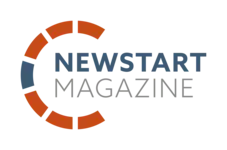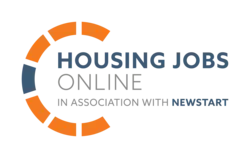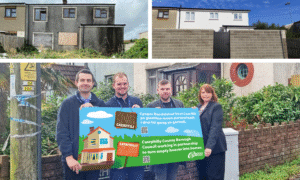 Flash back to the mid-18th century, and the landscape of the south Wales valleys was extremely different. The surroundings and population reflected a rural environment, with small villages and farmland scattering the sparse inhabitants throughout the rugged and beautiful countryside.
Flash back to the mid-18th century, and the landscape of the south Wales valleys was extremely different. The surroundings and population reflected a rural environment, with small villages and farmland scattering the sparse inhabitants throughout the rugged and beautiful countryside.
The residents at the time would have had little idea of the riches that lay beneath the ground – miles upon miles of coalfields, coupled with vital raw materials for the production of iron – which would thrust this green and pleasant land into the fulcrum of the industrial revolution.
The revolution led to an explosion of activity and employment opportunities that saw the population rise exponentially as people travelled to the area from all over the world for gainful employment. Such was the vast influx of migrant workers that an incredible range and breadth of cultures and sub-communities established themselves.
There was a saying that there was never a cold bed in the valleys – the day shift workers slept through the night, and then lodgers working nights would use the same bed during the day!
This gives an insight into the community that existed then: people needed to be flexible, to share and help one another simply to survive. Although the work was as plentiful as it was hard, the pay was generally low, especially when feeding a family on one wage.
That sense of community stretched further, with the workers donating their wages to build community halls which served as hubs for all manner of activity, filling the towns and villages with cheer and song to combat the dire working conditions and daily struggles.
Flash forward to the present day, and the heavy industry is long-gone, along with the mass employment opportunities it presented. The legacy of the industrial revolution across south Wales is unemployment, with the population remaining but the work not being sufficient to satisfy demand.
Most of the physical scars on the landscape have been removed, replaced once more with green spaces. However, the grand working men’s halls have, in the main, fallen into disrepair, providing a somewhat symbolic image of the region’s general fall from providence.
This has led to a generational unemployment epidemic, with families in many respects witnessing third or fourth generation benefit dependency, coupled with differing degrees of poverty.
There’s a clear and undisputed link between long-term unemployment and mental/physical health, substance misuse and economic inactivity, and a range of physical, economic and social regeneration tools have been employed to support the population in reaching higher levels of prosperity.
Post-industrial, post-war south Wales has been firmly gripped by what many term ‘the benefits trap’, with many families progressing through a third and fourth generation of worklessness.
Rather than helping people engage in a day-in day-out work environment, offering the camaraderie and companionship that walks hand in hand with employment and economic activity, benefits have served to isolate families and the population. Such isolation, coupled with inherent poverty, has served to breed mental health issues, antisocial behaviour, and a range of other social ills.
Clearly, the public and third sectors have needed to respond to a longstanding SOS message from a community still reeling from stark decline.
In 2010, a project was started specifically to encourage the creation, growth and development of social enterprises across the South Wales Valleys. The South East Wales Community Economic Development (SEWCED) programme is delivered in partnership by a six-valleys local authority consortium of Blaenau Gwent, Bridgend, Caerphilly, Merthyr Tydfil, Rhondda Cynon Taf and Torfaen. The programme is supported by the European Regional Development Fund through the Welsh Government, providing a flexible funding package for both revenue and capital investments.
The core aim is to encourage increased income generation through trading, diversification, growth and investment; to reduce the sector’s reliance on funding, promote sustainable volunteering opportunities, provide ongoing employment, and support the development of services within areas of market failure – where the private sector cannot go due to low – or no – profit margins.
To date, over £7m has been invested supporting over 100 enterprises and creating the equivalent of 90 full-time jobs – figures that will continually rise until the project’s conclusion in August 2015. The investment has gone directly into deprived communities, supporting a wide range of social and community added value through the development of organisations and their services.
SEWCED is a vital component of a suite of support instilling more of a business mentality into the social enterprise sector. With unprecedented cuts facing the public sector, a cumulative reduction in available funding is inevitable. Inculcating self-sufficiency among the social enterprise base is therefore essential.
Plans are now being submitted to Welsh government for a follow-on project after SEWCED’s closure as we feel the job is currently only half-done.
We’ve worked with some incredible organisations and individuals, whose sole aim is to make their community a better place. One focus of the project moving forward is to publicise the projects and people making a real impact on the ground, as they are genuinely changing people’s lives for the better.
If that isn’t a legacy worth leaving, then what is?

















Craft of Hearts came about in my brain but would not have been possible if not for SEWCED funding. As we approach our first birthday I can happily report that we have a growing customer base in our shop in Tonypandy, we are providing services to local Communities First programme who are finding the value of our project, are working out in the community.
Apologies – sent incomplete reply!
Working in the community with groups and charities who asked us to demonstrate our skills and are travelling throughout and beyond RCT to offer our services. All of this contributes to our economic activity – but our business plan states that we support economic activity of small businesses and individuals by offering training, signposting to appropriate organisations and offering avenues for the sale of crafts.
We are about to hold our third huge event – the largest craft fair in South and West Wales. We have a vast following for these events and are expanding these opportunities this year.
We look forward to our second year trading!
In haste, I read this article and had the following immediate thoughts:
>Carbonisation of the Valleys, followed by de-carbonisation of the Valleys;
>”Creative destruction”;
>Long Term Health / Disability: presenting at a recent Cardiff University Innovation Network meeting, Professor Kevin Morgan put up a slide showing the top 10 local authorities in the UK with long term health problems (including: Neath Port Talbot; Merthyr Tydfil; Blaenau Gwent; Rhondda Cynon Taf; Caerphilly; Carmarthenshire; Bridgend; Torfaen….and two authorities in England: Knowsley and Blackpool);
>Green infrastructure……the importance thereof….and the creation of, and investment in, the Valleys Regional Park (significant EU investment)…….tourism represents a huge opportunity;
>Complexity theory: which in part explains the success of The Arts Factory and Valleys Kids;
>By way of comparator, I thought about BG Effect http://www.bgeffect.com/ and wonder whether such a programme could / should be rolled out across the Valleys;
>The South East Wales Community Economic Development (SEWCED) programme: as a regen practitioner, I have not heard of this organisation before – clearly it’s a secret!
Initially thank you for the responses, we have had the privilege of working with so many fantastic organizations such as Craft of Hearts – a social enterprise that perfectly illustrates what the SEWCED programme is being delivered to achieve.
We are delighted that our award to Craft of Hearts has made a positive impact and are working with the initiative to support its second birthday events over the coming two weekends.
SEWCED is a collaborative programme, and the effectiveness of networks between the six local authorities delivering the project and local social enterprises is such that the demand for support has been exceptional.
Facilitating such demand was the key priority of the initial phase of the project. We are currently developing a range of initiatives to raise awareness of the scheme, its beneficiaries and the sector in general. This blog is one such component and we look forward to sharing our findings, progress and the views of key organizations moving forward.
With reference to the BG Effect project, several Heads of the Valleys local authorities are liaising with Blaenau Gwent Council and Welsh Government on a rollout of the programme to other areas.